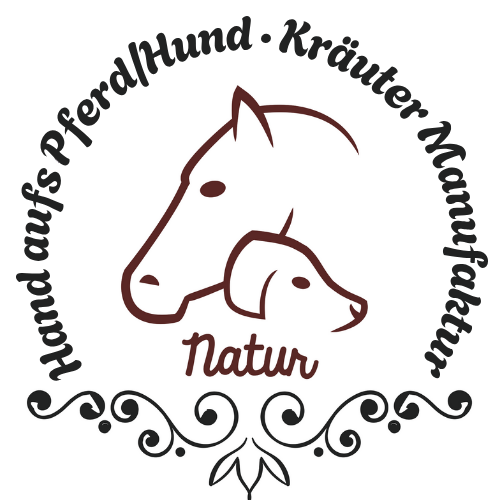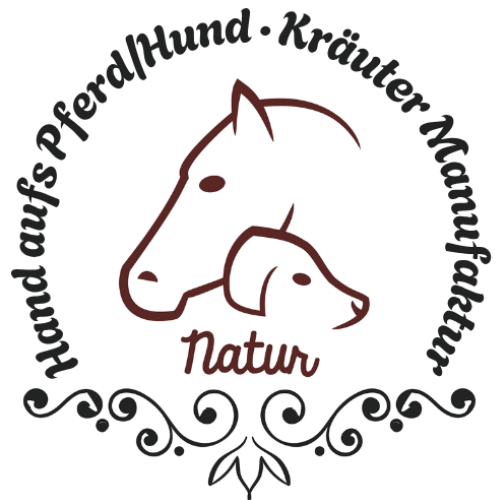
HD hip dysplasia in dogs
Hip dysplasia (HD) in dogs: What you need to know and how you can help your dog
Hip dysplasia (HD) is one of the most common joint diseases in dogs and particularly affects large and fast-growing breeds such as Labradors, German Shepherds, and Rottweilers. HD is a malformation of the hip joint, leading to loosening of the joint and, in the worst cases, arthritis and severe pain. This condition can occur in both puppies and older dogs, but often only becomes apparent later in life.
In this blog, I would like to explain to you what hip dysplasia is, how it manifests itself, what causes it, and what you can do to help your dog if he is affected.
What is hip dysplasia (HD)?
Hip dysplasia is a developmental disorder of the hip joint in which the acetabulum and femoral head do not fit together optimally. Normally, the femoral head provides a stable connection in the acetabulum, cushioned by sturdy cartilage. In hip dysplasia, this connection is too loose, so the femoral head does not fit properly into the acetabulum. This leads to incorrect loading of the joint, which over time can lead to wear and tear of the cartilage and inflammation.
Causes of hip dysplasia
The exact cause of hip dysplasia is not yet fully understood, but there are several factors that can influence the risk:
-
Genetics : Hip dysplasia has a strong genetic component. The risk is particularly high in large and heavy dog breeds. Dogs from breedings with hip dysplasia ancestors are at increased risk.
-
Rapid growth : Especially in large breeds, the joint tends to develop more slowly or irregularly if the dog grows too quickly. This often happens in dogs that are overfed or lack exercise.
-
Obesity : Excessive body weight places additional strain on the hip joints and can promote the development or progression of hip dysplasia. Overweight dogs place more pressure on their joints, which can exacerbate the deformity.
-
Incorrect loading and incorrect movement : Accidents, incorrect posture or excessive strain due to too intensive training can also increase the risk of dysplasia developing.
How does hip dysplasia manifest in dogs?
The symptoms of hip dysplasia can vary greatly and depend on the severity of the dysplasia and how quickly the condition worsens. The most common signs include:
-
Limping or lameness : Affected dogs often exhibit a limp or imbalance when walking, especially after getting up or after lying down for a long time. Sometimes the lameness only occurs after strenuous walks or play.
-
Movement restrictions : Your dog may have difficulty jumping, climbing stairs, or moving around in general. Getting up from a lying position may also be difficult.
-
Stiff movements : A dog with HD often moves stiffly, especially as it gets older or its joints become less flexible.
-
Muscle loss : Restricted movement in the thigh area can lead to a loss of muscle mass. This occurs because the dog avoids certain movements due to pain.
-
Behavioral changes : Due to chronic pain, affected dogs are often less active, react irritably and withdraw more.
Diagnosis and treatment of HD
If you notice signs of hip dysplasia in your dog, it's important to consult a veterinarian promptly. The veterinarian will usually make an accurate diagnosis based on various tests:
-
Clinical examination : The veterinarian checks the mobility of the hip joint, looks for painful points and observes how your dog reacts to certain movements.
-
X-rays : To more accurately assess the condition of the hip, X-rays are usually taken. These allow the veterinarian to determine whether and to what extent the hip joints are deformed.
-
Movement analysis : Sometimes gait or movement analyses are also performed to determine how the dog loads its hips and whether there are any compensatory movements.
Once diagnosed, there are several ways you can treat the symptoms:
Treatment options for hip dysplasia
Hip dysplasia cannot be cured, but there are many measures that can help relieve pain and provide your dog with a better quality of life:
1. Drug therapy
Pain relievers and anti-inflammatory medications (such as NSAIDs) can help relieve pain and reduce inflammation. In some cases, injections of hyaluronic acid or cortisone are also recommended to lubricate the joint and reduce inflammation.
2. Physiotherapy
Physiotherapy is a very helpful treatment for strengthening the muscles around the hip joint, maintaining mobility, and relieving pain. An experienced canine physiotherapist can perform targeted exercises or help you develop ways to support your dog at home.
3. Weight management
A healthy weight is especially important to relieve pressure on the joints. Excess weight increases the strain on the hips and can worsen symptoms. A balanced diet and, if necessary, a diet can help stabilize your dog's weight.
4. Joint-protecting supplements
Supplements such as glucosamine , chondroitin , and omega-3 fatty acids can help nourish cartilage and improve joint function. These preparations are available in many pet foods or as special supplements.
5. Surgical options
In severe cases, when all other measures are no longer sufficient, surgical treatment may be necessary. Options include:
-
Hip replacement surgery : In some cases, hip surgery is performed to stabilize or replace the joint.
-
Hip replacement (endoprosthesis) : A hip replacement can be particularly useful for young dogs that are severely affected.
Hip dysplasia is a painful and unfortunately common condition, especially in large dogs, but with proper care and treatment, your dog can live a relatively pain-free and active life. By recognizing the symptoms early and developing an appropriate treatment plan with your veterinarian, you can help your dog maintain a high quality of life despite hip dysplasia. Remember that a combination of weight management, physical therapy, pain management, and joint protection medications is often the best solution to reduce pain and promote mobility.
Frequently asked questions (FAQ) about hip dysplasia (HD) in dogs
1. What is hip dysplasia (HD) in dogs?
Hip dysplasia (HD) is a malformation of the hip joint in which the femoral head does not fit properly into the acetabulum. This results in a loose connection between the two joint components, which impairs joint function and can lead to pain, inflammation, and later arthritis.
2. Which dogs are particularly affected by HD?
Large and heavy dog breeds are particularly prone to hip dysplasia. Commonly affected breeds include Labrador Retrievers, German Shepherds, Rottweilers, St. Bernards, Bulldogs, and Great Danes. However, hip dysplasia can also occur in smaller dogs if they are genetically predisposed.
3. What are the main causes of HD?
The main causes of hip dysplasia are genetic factors, rapid growth in puppies, obesity, and improper loading of the joints. Excessive weight gain during puppyhood or lack of exercise can also increase the risk.
4. How do I know if my dog has HD?
Symptoms of HD can include limping, stiffness, difficulty standing, lameness after playing or walking, and avoidance of activities such as jumping or climbing stairs. A change in gait or a reduced willingness to move can also be signs of HD.
5. Can HD be cured in dogs?
Unfortunately, there is no cure for hip dysplasia. Treatment aims to relieve symptoms, slow the progression of the disease, and improve the dog's quality of life. This includes pain medication, physical therapy, and, in severe cases, surgery.
6. How is HD diagnosed?
Diagnosis is usually made through a thorough clinical examination of the dog, during which the veterinarian monitors for signs of pain and restricted movement. X-rays are necessary to accurately assess the structure of the hip joint and determine the extent of dysplasia.
7. How can I help my dog with HD?
The treatment includes:
-
Drug therapy : Painkillers and anti-inflammatory drugs to relieve pain and inflammation.
-
Physiotherapy : Strengthening muscles and improving joint mobility.
-
Weight management : Maintaining a healthy weight relieves pressure on the joints.
-
Joint-friendly supplements : Preparations containing glucosamine, chondroitin, and omega-3 fatty acids can support joint health.
-
Surgery : In severe cases, surgical treatment such as hip replacement or hip joint surgery may be necessary.
8. Can my dog still be active with HD?
Yes, with proper treatment and an adjusted lifestyle, your dog can continue to be active. It's important to control movement and avoid overexertion. Swimming or short, regular walks are particularly gentle on the joints.
9. Which dietary supplements are helpful for HD?
Dogs with hip dysplasia can benefit from supplements containing glucosamine , chondroitin , and omega-3 fatty acids . These help maintain joint function and reduce inflammation. However, always consult your veterinarian about which supplements are best for your dog.
10. Do I need to pay attention to anything regarding my dog's diet?
Yes, a balanced diet with the right ratio of calories and nutrients is important to prevent obesity and relieve pressure on the joints. A diet is especially advisable for overweight dogs to help reduce the extra weight from their hips.
11. How can I minimize the risk of HD in puppies?
If you're raising a puppy or adopting a dog from a breeder, make sure the parents have been tested for hip dysplasia. Many reputable breeders will x-ray their breeding animals to check for hip dysplasia. It's also important not to overfeed puppies and provide them with regular, moderate exercise to support joint growth.
12. When should I take my dog to the vet?
If you notice any of the symptoms listed above in your dog, such as lameness, stiffness, or difficulty moving, it's advisable to consult a veterinarian promptly. An early diagnosis can help better manage the condition and improve your dog's quality of life.
13. Can HD be inherited?
Yes, hip dysplasia has a genetic component. Dogs from breeders with a known history of hip dysplasia are at a higher risk of developing the disease. Make sure to choose dogs from responsible breeders who test their breeding stock for hip dysplasia.
14. Can my dog have a normal lifespan with HD?
Yes, many dogs with HD live full lives if the condition is treated early. With proper care and treatment, most dogs can remain relatively pain-free and active.
15. Are there alternative treatment options?
Yes, some dog owners rely on acupuncture , homeopathy , or massage to alleviate symptoms. These methods can be supportive, but they are not a substitute for veterinary treatment. It is important to discuss alternative therapies with your veterinarian.
Source: Martina Hemm June 2025



